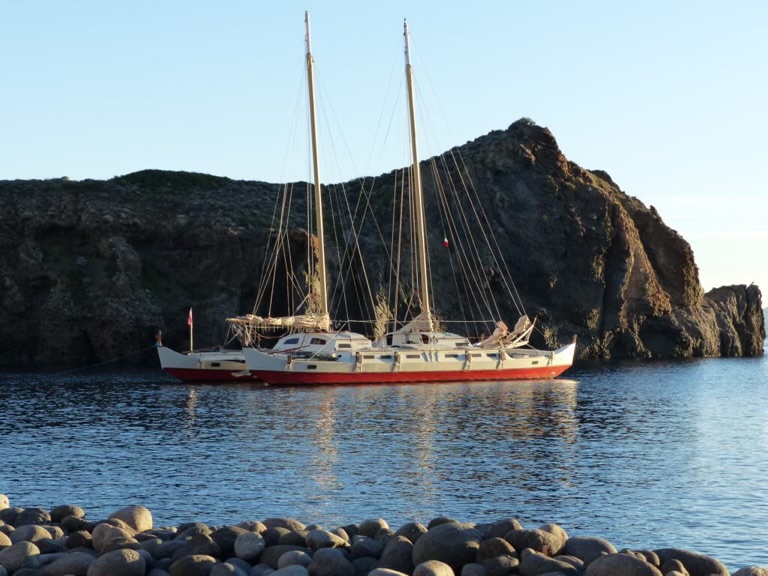Gathering places, plus private space
Nearly finished Island … an older story but one badly needing a better ending and fixing the twee parts … why bother at this ‘end of the west’ time? Well … because it’s actually about the end of the west, to the point the indigenous European stock is looking to flee to havens distant.
Part of that is having the craft to do it … yes, regulars here must have known I could not stay aloof from boats for long. There was a point in the revamped last few chapters when the godfather type swapped his cruising catamaran for the male protagonist’s motor launch … a wise decision with oil and gas distribution now dead for the escapees … and this is the model:

That one is the now deceased owner/designer’s own craft, a Pahi, 63 feet long, 28 feet wide. So, the tale in Island goes that the “Patron”, as he’s called, had one of these built and used it around Ireland.
She’s a true oceangoing craft and what brought her to mind? Well the gallant crew find themselves in northern Patagonia (don’t ask) and need to scarper … where to? Well, to Macquarie harbour of course, but the astute would note that that involves setting out eastwards, surfing the “howling 50s” below the Falklands, below Cape Town, then all the way across to Van Diemen’s Land … a most mortifying voyage, requiring just the right boat with maximum primary stability, i.e. a large, low profile cat with discrete, sealed compartments in the hulls, plus modular deck, able to be moved around.
Which then comes down to privacy. The designer, James Wharram, a bit like Nige, loved a gal or five and so designed a “tribal” central space, which did have four large cabins a distance from each other, plus smaller deck gathering areas fore and aft … for a crew of 4 or 6 … great, more than enough privacy … any more people … horrendous … any fewer … wearing, tiring on the bods ( remembering ship’s watches).
With a mixed crew, 3 couples … privacy assumes huge proportions and whom those six are determines if it would be workable or not. In the book, it gradually forms over time, so it’s not a bad bunch.
Boat design-wise, they were always known as “hippy” boats, shunned by the shiny million dollar yachties … and good thing too. Shallow draft, everything was repairable from local raw materials, even in the third world … the craft almost sailed itself, apart from regular upkeep.
Downside with open plan is the cold weather … she’s very much a Spain, Canaries, Med boat, maybe Brazil, not really for Patagonia or Tassie but the modula nature of the deck means the ability to cover in the cold. In a British winter, head for warmer climes, esp. if able to “work from home”, e.g. retirees. Cheaply.